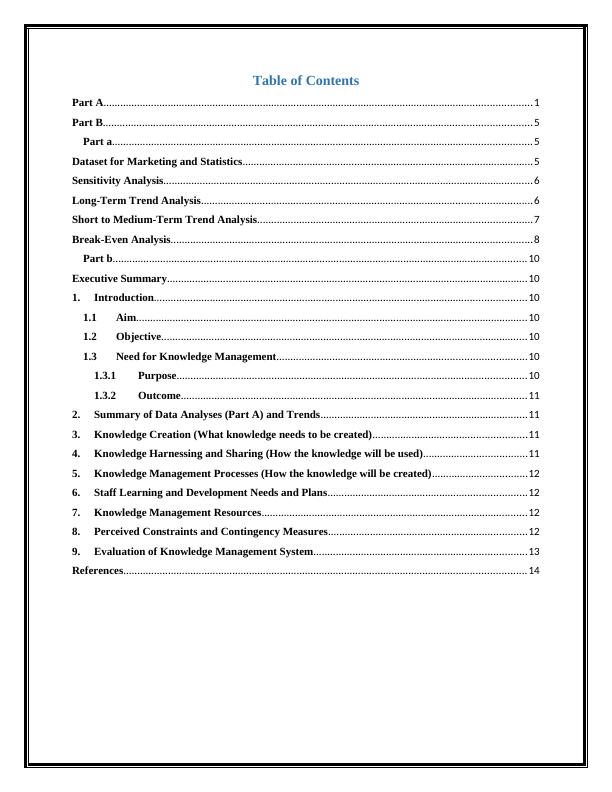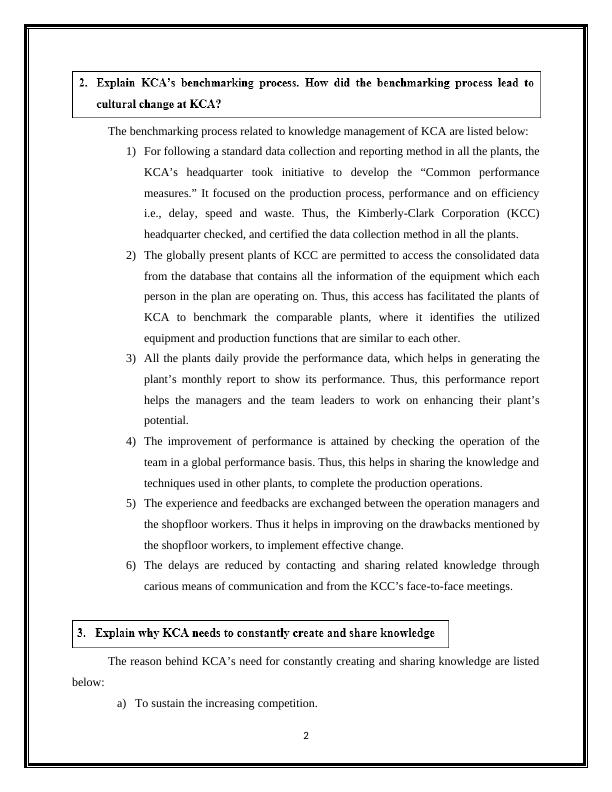Assessment Task 1 Part B 5 Part A 1 Part B 5 Part A 5 Part B 5 Part A 5 Part B 5 Part A 5 Part B 5 Part A 5 Part B 5 Part A 5 Part B 5 Part A 5 Part B 5 Part A 5 Part B 7 Part B 10 Executive Summary 1
16 Pages2668 Words458 Views
BSBINM601 Manage Knowledge and Information (BSBINM601)
Added on 2019-11-12
About This Document
Assessment Task 1 Assessment Task 1 Part A 1 Part B 5 Part a 5 Dataset for Marketing and Statistics 5 Sensitivity Analysis 6 Long-Term Trend Analysis 6 Short to Medium-Term Trend Analysis 7 Break-Even Analysis 8 Part b 10 Executive Summary 10 1. Introduction 10 1.1 Aim 10 1.2 Objective 10 1.3 Need for Knowledge Management 10 1.3.1 Purpose 10 1.3.2 Outcome 11 2. Evaluation of Knowledge Management System 13 References 14 Part A It is very important for Kimberly-Clark Australia (KCA
Assessment Task 1 Part B 5 Part A 1 Part B 5 Part A 5 Part B 5 Part A 5 Part B 5 Part A 5 Part B 5 Part A 5 Part B 5 Part A 5 Part B 5 Part A 5 Part B 5 Part A 5 Part B 7 Part B 10 Executive Summary 1
BSBINM601 Manage Knowledge and Information (BSBINM601)
Added on 2019-11-12
ShareRelated Documents
End of preview
Want to access all the pages? Upload your documents or become a member.
Advanced Diploma of Business
|15
|3079
|380
BSB60215 - Advanced Diploma of Business
|16
|2225
|106
Knowledge Management System
|12
|3105
|275
Manage Knowledge and Information: Assignment
|10
|2228
|381
Sales analysis of Volkswagen and Vauxhall11
|20
|5184
|65
Knowledge Management & Information system Introduction 3 Part 13 A 3 B 4 C 4 D 7 Part 28 A 8 B 8 C 10 Introduction
|16
|4928
|461




